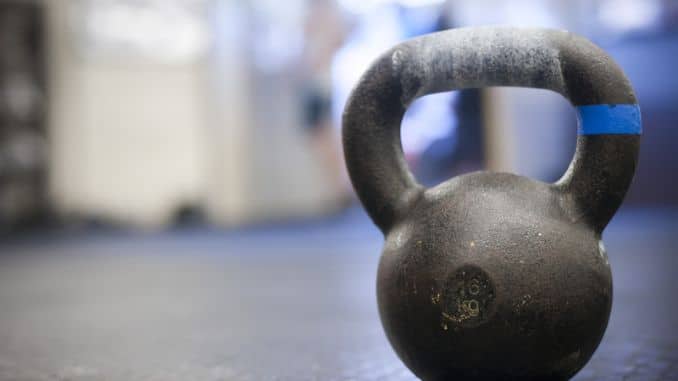I am excited for today and this weekend. Today is Sports Day for my four-year-old son, and the dads get to go and participate. I don’t remember the last sports day I was in; it might have been over 20 years back in 1986 at Harbour View Elementary. The post from Trey a few days back got me thinking about new fitness toys to add to my toolbox.
Three fitness toys with many late discussions are kettlebells, sleds, and suspension trainers. I have been resistant to spending much time, energy, or money on these toys as I wondered if they would be another fad, but it looks like they will stay.
Regarding fitness toys, I like to dig into the research, see what it has to say about the toy, and compare it to all the promises the manufacturers and distributors make.
Let’s dig in.
If You Like Kettlebells, Don’t Be Like This Guy.
When I hear people talk about kettlebells, I roll my eyes.
People that are into kettlebells remind me of a friend. The friend was into bowling. I mean really into bowling. He bowled every day.
He only talked about bowling and felt everything could be solved with bowling. Then he had his bowling ball. Bowling outfits, and different bowling shoes, depending on where he was bowling.
This guy was “over the top” in bowling, to a point where it repelled you from bowling rather than being interested in learning more about it.
It was the same with triathlon when I was training for Ironman Canada in Penticton. Some people were “way into it,” pushing you away from the sport.
I find many kettlebell people are the same. Let’s see if we can find where kettlebells can fit in to help a trainer with fitness and rehab.

Kettlebell Exercises for Knee Rehabilitation
Let’s get into some rehab stuff! They made a case for using kettlebells to rehabilitate lower-body injuries. It is an exciting suggestion.
They talk about these exercises with the kettlebell:
- kettlebell swing – 1 hand
- kettlebell swing – 2 hands
- deadlift – 1 arm
- deadlift – 2 arms
- lunge with kettlebell pass
Here is a little video that I did with Geoff Neupert on common kettlebell mistakes:
I do like their suggestions. The exercises they listed are new-ish fitness movements, which is nice. The more we can expand on our bodybuilding roots, the better.
Realistically, most rehabilitation clinics will not have kettlebells or will pass on getting them due to several factors (space, cost, client education about the new toy). In facilities where there is athlete recovery or training, there is a good chance one will find kettlebells. Plus, all the above exercises can be done with a dumbbell at a lighter load.
Another comment in the article was that they only found one other piece in Pubmed related to kettlebells. I just checked, and the number has increased; it is now at 10.
Kettlebell Swing Exercises are Good for the Lower Back
Before discussing the research, let’s talk about Dr. Stuart McGill. This guy is fantastic, plus he has an epic stash (mustache). It is almost as awesome as my dad’s.
I organized a conference in 1998 and brought him to Vancouver to present his back research. Even at that time, he had 200 research articles published. I can’t imagine what it is like now. We can learn a lot from his action on what we need to do as individuals and fitness professionals:
- Passion – Find your love and put everything into it. I don’t know anyone that had done more research on the back than Stu.
- Curiosity – He is always curious to see if what people say is true. I guess people were saying that kettlebell swings were good for their back, so he went out to see if that was true.
- Prolific – This guy keeps doing more research, writing, and presenting on the topic he is passionate about.
Okay, back to the research.
This research wanted to measure the spinal load of different kettlebell swings and carries.
Here is a video of Tony Gentilcore performing a kettlebell swing
Here are some highlights from the research on Kettlebell Exercises:
- The kettlebell swing created a hip-hinge squat pattern with raid muscle activation and relaxation.
- The kettlebell swing created 50% maximal voluntary contraction (MVC) of the back extensors and 80% for the gluteal muscles using a 16-kg kettlebell.
- Kettlebells carry to create a unique abdominal muscle pulse associated only with kettlebells.
- The kettlebell swing created a posterior shear on L4 on L5, which is the opposite of traditional lifts, which may be why some report kettlebells helping their back.
I ended up taking away from the research that kettlebell swing provides significant gluteal activation and could help some people with lower back pain; plus, kettlebell carries provide a unique abdominal activation.
Brumitt J, En Gilpin H, Brunette M, Meira EP. (2010). Incorporating kettlebells into a lower extremity sports rehabilitation program. N Am J Sports Phys Ther. 2010 Dec;5(4):257-65.
McGill SM, Marshall LW. (2012). Kettlebell swing, snatch, and bottoms-up carry: back and hip muscle activation, motion, and low back loads. J Strength Cond Res. 2012 Jan;26(1):16-27.